I. Introduction
We know that Machine learning can improve business intelligence. Machine learning models used in AI recommendation system is used to make suggestions to users about products or services based on their past behavior or preferences. Social media sites, streaming services, and online stores often use these systems to improve the user experience. They do this by giving each user personalized recommendations based on their interests and needs.
A. Why AI is useful for building recommendation systems
Building recommendation systems with artificial intelligence (AI) is advantageous because it enables these systems to accumulate knowledge about user behaviour over time. Using machine learning algorithms, recommendation systems can look at a huge amount of data, such as user behaviour and preferences, to figure out which products a user is most likely to be interested in. Thanks to AI, recommendation systems can now handle large sets of complicated data, find patterns in how users act, and improve their accuracy over time.
B. Purpose of the article
This article aims to give readers a step-by-step tutorial on creating an AI recommendation system. By following this guide, readers will learn how to collect and prepare data, engineer features, train and choose a model and deploy the recommendation system to a cloud platform. This article is for data scientists, developers, and other professionals who want to make recommendation systems for their company or organization. It gives a detailed look at the steps needed to make an AI recommendation system.
II. Understanding AI Recommendation System
A. Definition of Recommendation systems
A recommendation system is an algorithmic tool that analyzes information from past user behavior and preferences to produce tailored suggestions of goods or services. A recommendation system aims to provide users with suggestions that are pertinent to their interests and needs. Recommendation systems are widely used in social media, e-commerce, and content delivery platforms.
B. Types of AI Recommendation system
There are 7 main types of AI Recommendation systems:
1. Content-Based Recommendation Systems:
This type of recommendation system recommends items similar to those the user has liked or interacted with. It uses the user’s historical data and identifies the common characteristics of the liked items and suggests similar items based on those characteristics.
2. Collaborative Filtering Recommendation Systems:
This type of recommendation system recommends items based on similar users’ preferences. It identifies users who have similar preferences and recommends items that are liked by those users but have not yet been explored by the current user.
3. Hybrid Recommendation Systems:
This type of recommendation system combines the features of both content-based and collaborative filtering recommendation systems to provide better recommendations. It uses the user’s historical data and the preferences of similar users to suggest items that are similar to the user’s past preferences but have not yet been explored by the user.
4. Knowledge-Based Recommendation Systems:
This recommendation system uses domain experts’ knowledge to recommend items. It takes into account the user’s requirements and preferences and recommends items that match those requirements. For example, a knowledge-based recommendation system for a hotel booking platform might recommend hotels based on the user’s preferred location, budget, amenities, and other preferences.
5. Reinforcement Learning Recommendation Systems:
This type of recommendation system uses reinforcement learning techniques to optimize the recommendations based on user feedback. The system learns from the user’s actions and feedback to improve the recommendations over time. For example, a reinforcement learning recommendation system for a music streaming platform might recommend songs based on the user’s listening history and then use feedback from the user’s skip and play actions to improve future recommendations.
6. Context-Aware Recommendation Systems:
This kind of recommendation system takes into account things like the user’s location, the time of day, the weather, and the type of device they are using. It makes suggestions for products that are suitable for the given situation. For instance, based on the user’s location, the time of day, and the weather, a context-aware recommendation system for a food delivery platform might suggest food items.
7. Demographic-Based Recommendation Systems:
This kind of recommendation system makes product recommendations based on demographic data like age, gender, and occupation. It assumes that people tend to have similar preferences when their demographics are similar. A demographic-based recommendation system for a fashion e-commerce platform might suggest clothing items based on the user’s gender, age, and job.
C. Benefits of AI Recommendation System
Artificial intelligence is being used in many businesses. Recommendation systems offer several benefits, including:
Increased user engagement and retention: By providing personalized recommendations, recommendation systems can help users find relevant and interesting items, increasing their engagement with a platform and encouraging them to return.
Improved customer satisfaction: When users are presented with relevant recommendations, they are more likely to find items that meet their needs and preferences, leading to higher customer satisfaction.
Higher conversion rates and revenue: When users are presented with relevant recommendations, they are more likely to make a purchase, which can increase conversion rates and generate more revenue for businesses.
Better insights into user behavior: By analyzing user behavior and preferences, recommendation systems can provide valuable insights into user preferences, which can inform business decisions and strategies.
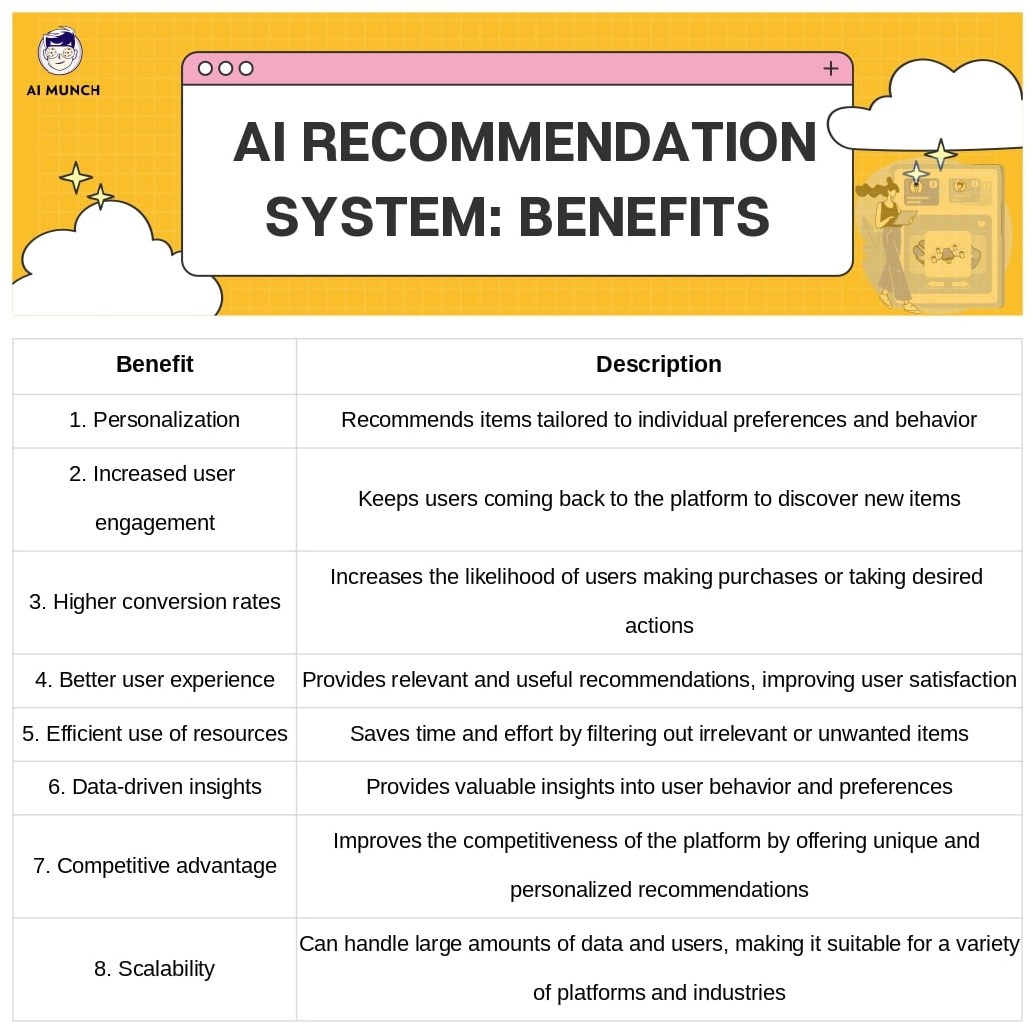
III. Building an AI Recommendation System
Time needed: 4 days
Time and Tools depend on the type of system we are trying to build.
- Choosing a programming language and machine learning framework
The first step in building a recommendation system with AI is to choose a programming language and machine learning framework. Popular options include Python and its machine learning libraries such as scikit-learn, TensorFlow, and PyTorch. These frameworks provide pre-built algorithms and tools that make it easier to develop a recommendation system.
- Gathering and preprocessing data
Before building a recommendation system, gathering and preprocessing data is necessary. This involves three key steps:
Data collection: Collect data on users’ behavior, such as purchase history, ratings, and browsing activity, as well as item data, such as descriptions and attributes.
Data cleaning: Clean the data to remove any errors, duplicates, or missing values.
Data transformation: Transform the data into a format that is suitable for machine learning algorithms, such as a matrix or graph. - Feature Engineering
Feature engineering involves creating new features from the raw data to help the recommendation system make more accurate predictions. There are three types of features:
User features: These are characteristics of the user, such as demographics or past behavior.
Item features: These are characteristics of the item, such as genre or price.
Interaction features: These are features that capture the interaction between the user and the item, such as the time of day or location. - Model training and Selection
The next step is to train and select a model for the recommendation system. This involves four key steps:
Choosing a model architecture: There are several options for recommendation system models, including matrix factorization, deep learning, and graph-based models.
Model training: Train the model on the preprocessed data, using techniques such as stochastic gradient descent or collaborative filtering.
Model evaluation: Evaluate the model’s performance using precision, recall, and mean squared error metrics.
Hyperparameter tuning: Optimize the model’s hyperparameters, such as learning rate or regularization, to improve its performance.
Once the model has been trained and optimized, it can be deployed to a cloud platform or integrated into an application or website. By following these steps, developers and data scientists can build a recommendation system with AI that provides accurate and personalized recommendations to users.
IV. Deploying the AI Recommendation System
A. Preparing the model for deployment
The next step is to get the AI recommendation system ready for deployment after it has been built and trained. This means putting the trained model into a file that can be used in a production environment. Make sure the model can handle the anticipated volume of requests and is compatible with the deployment environment.
B. Choosing an API for the model
It is necessary to select an API (Application Programming Interface) for the model to make it accessible to other programs or services. Through APIs, other systems can communicate with the model and get suggestions based on user inputs. RESTful APIs, GraphQL APIs, and gRPC APIs are just a few of the API choices.
C. Deploying the model to a cloud platform
Utilizing a cloud platform like Amazon Web Services (AWS), Google Cloud Platform (GCP), or Microsoft Azure is one common method of deploying recommendation systems with AI. These platforms provide the infrastructure and services needed to deploy machine learning models, such as APIs, data storage, and monitoring tools. The recommendation system can be scaled more easily as traffic and demand rise by deploying to a cloud platform.
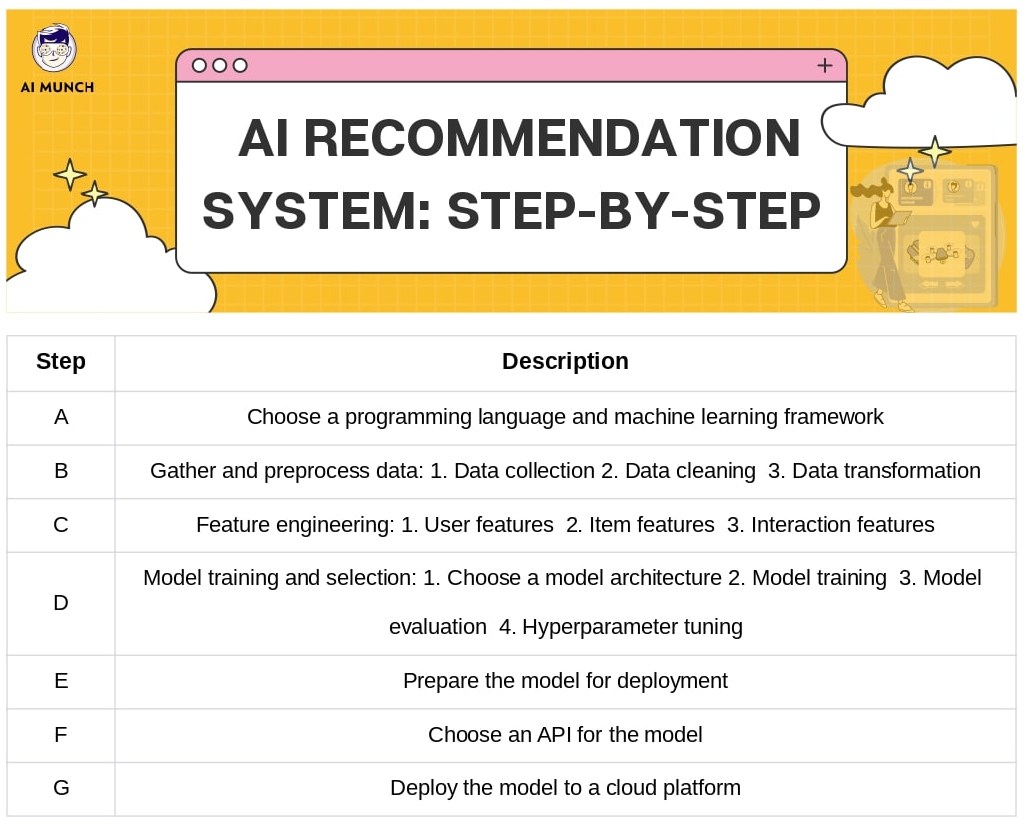
V. Conclusion
In conclusion, creating an AI recommendation system entails several crucial steps, such as selecting a programming language and machine learning framework, collecting and preprocessing data, and feature features, training and selecting the model, preparing the deployment model, selecting an API for the model, and deploying the model to a cloud platform.
Future of AI Recommendation systems
With so many new technologies and ideas being made, the future looks good for AI and recommendation systems. Deep learning, reinforcement learning, and natural language processing, to name a few, may change how recommendation systems are made and how they are used. As more data becomes available and machine learning algorithms improve, recommendation systems will keep giving users insightful analyses and recommendations tailored to their needs.
FAQs
1. Understand the Business.
2. Get the Data.
3. Explore, Clean, and Augment the Data.
4. Predict the Ranking.
5. Visualize the Data.
6. Iterate and Deploy Models.
Amazon, Netflix, and Spotify all use recommender systems, which are some of the most well-known examples of this technology. Systems that use collaborative filtering make suggestions for new products based on past user behavior. In order to make recommendations, content-based systems concentrate on the characteristics of the items.
An AI-powered recommender system is one that makes recommendations for goods, services, and information based on user data. The recommendation algorithm retrieves information about the user’s history, the actions of other users who are similar to them, and their preferences, interests, and purchasing history.
Netflix’s AI considers your viewing preferences and interests when recommending shows. Because the system can collect and suggest content based on what the user likes, the user can control the streaming of multimedia and make their interactions fit their needs.
A subclass of machine learning is called “recommendation engines.” These are usually used to rank or rate users or products. A recommender system is, in a broad sense, a system that guesses how a user might rate a certain item. The user will then be given a ranking of these predictions.
Do you want to read more? Check out these Articles.
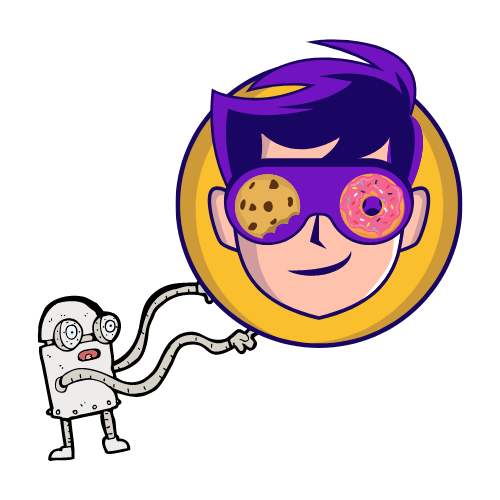


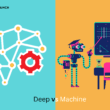
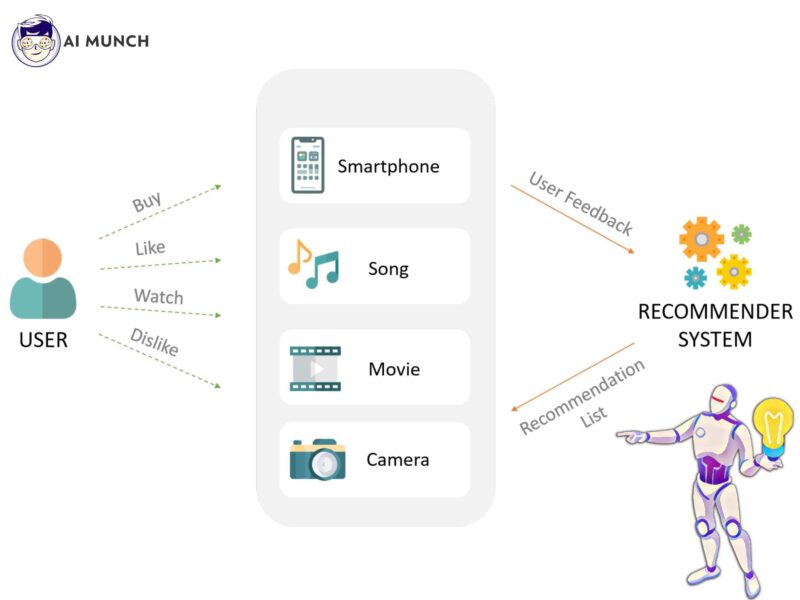
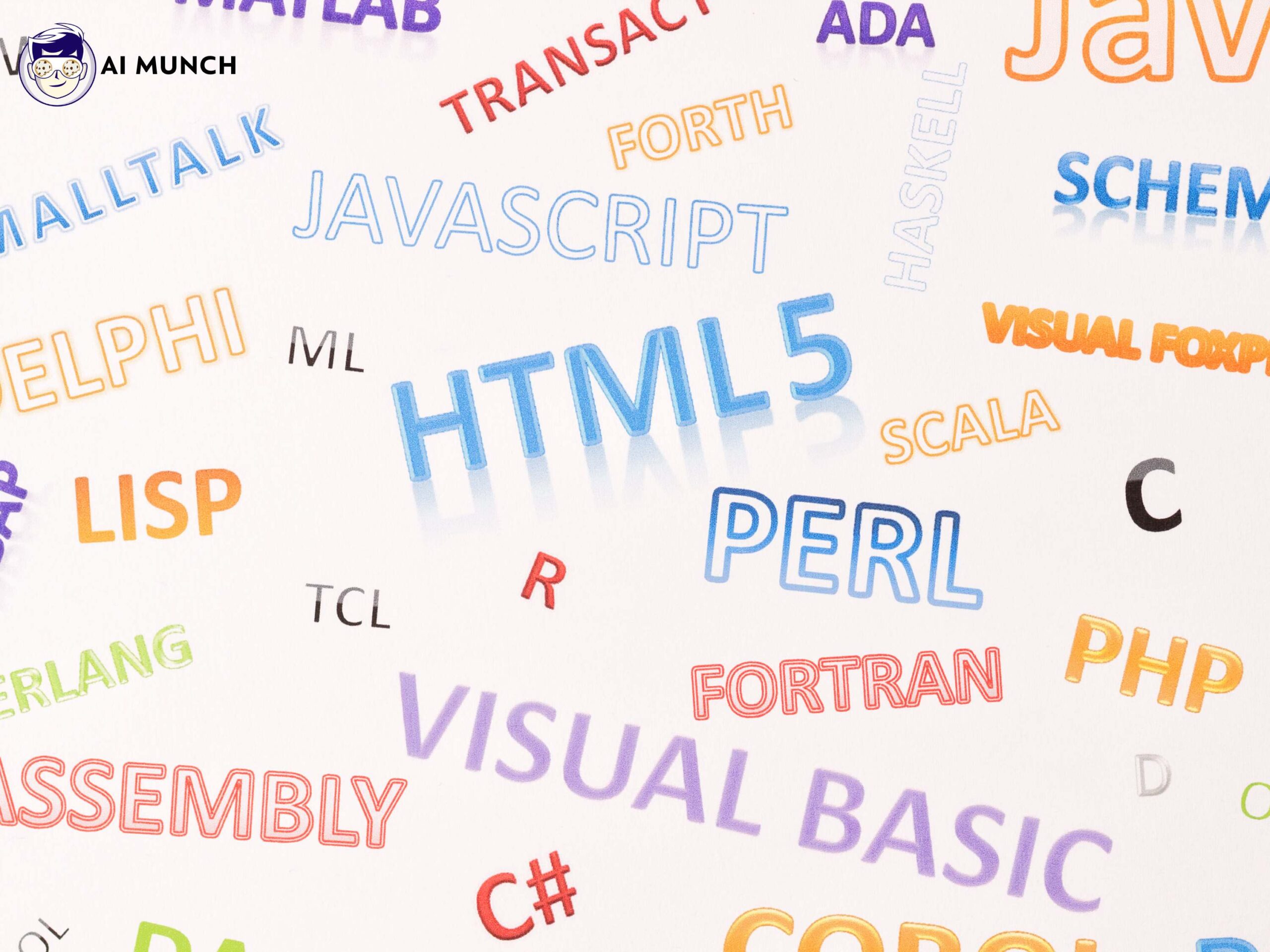

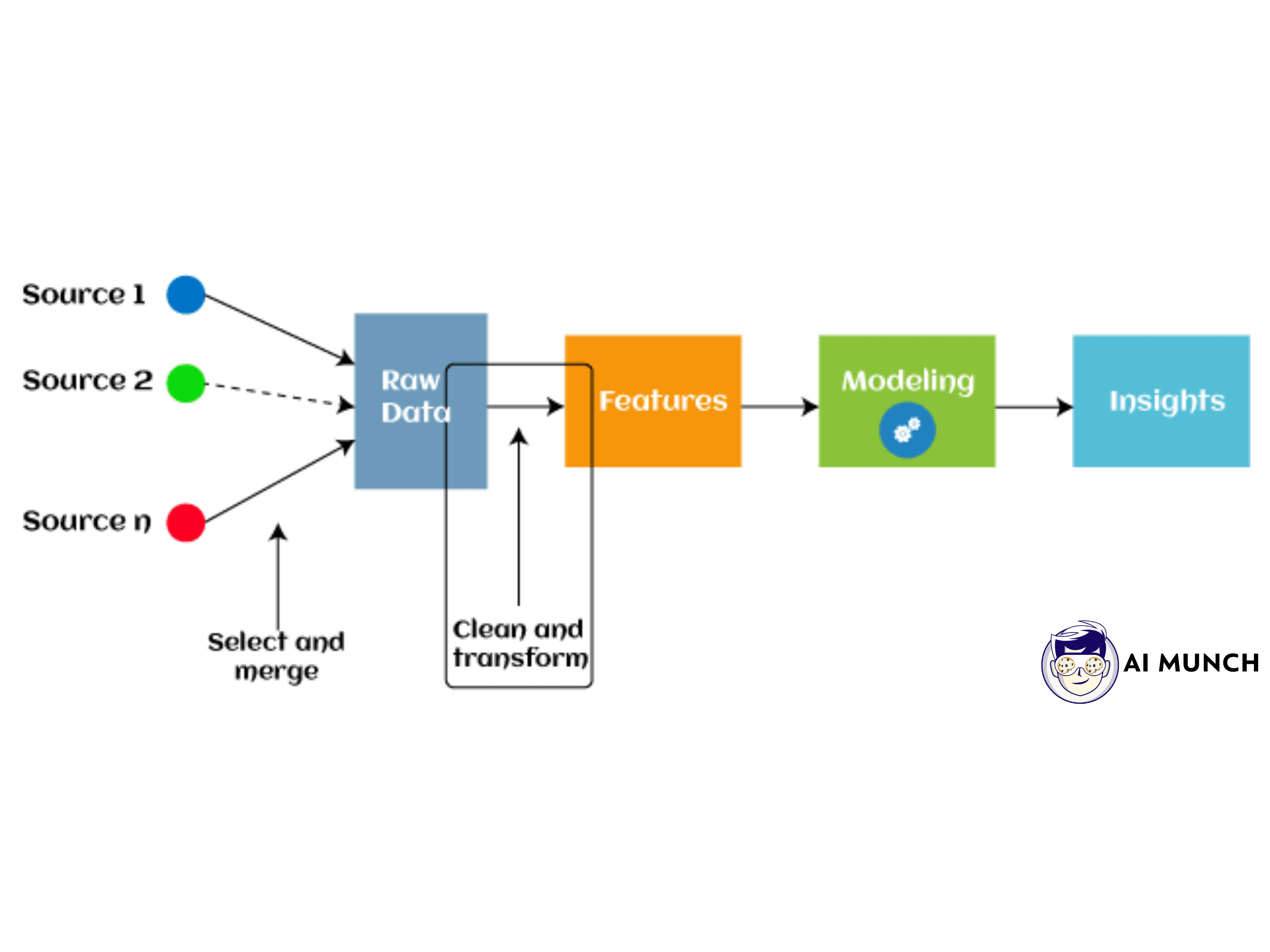







1 comment